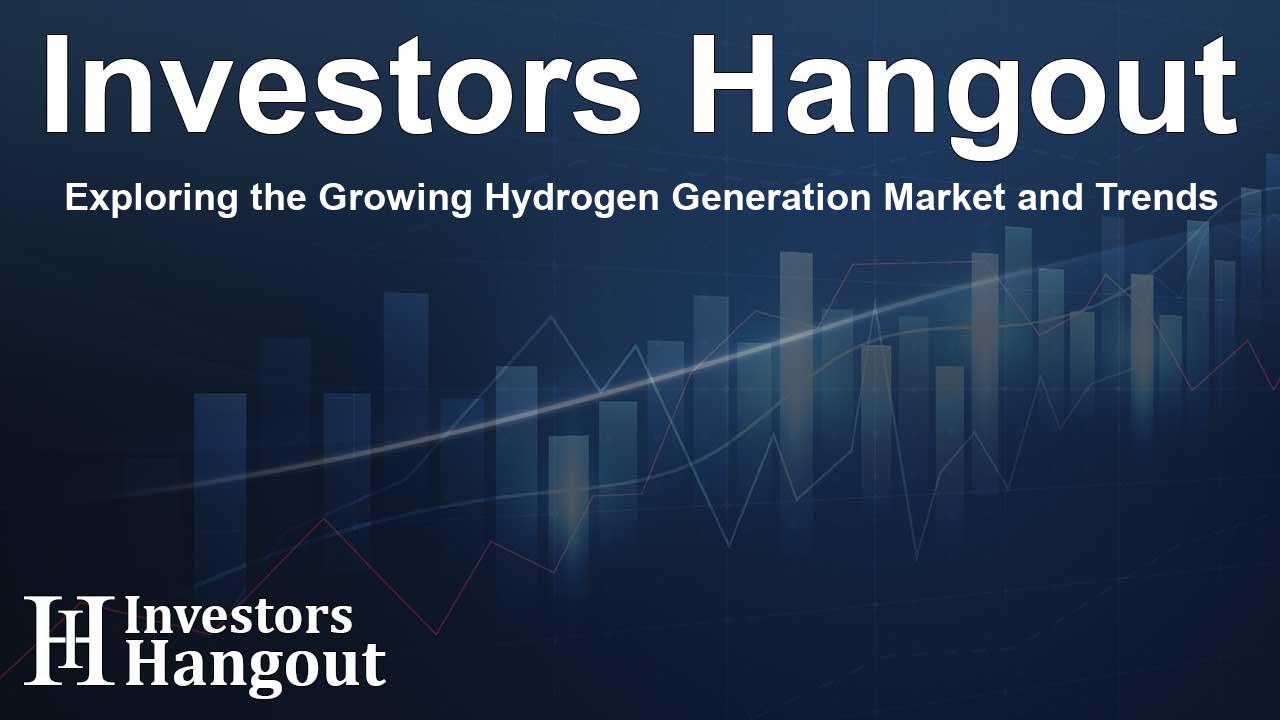Exploring the Growing Hydrogen Generation Market and Trends

Hydrogen Generation Market Overview
The global Hydrogen Generation Market is poised for substantial growth, with projections indicating a market size of USD 186.58 billion by 2024 and an expected increase to USD 317.39 billion by 2030. This remarkable growth rate, reflected in a compound annual growth rate (CAGR) of 9.3%, is bolstered by the rising global demand for cleaner fuel alternatives and supportive governmental policies.
Drivers of Market Growth
Cleansing Energy Alternatives
The transition to sustainable energy solutions is a vital component driving the hydrogen generation market. The urgency to reduce carbon emissions, particularly in response to escalating greenhouse gas concerns, has catalyzed the adoption of hydrogen in fuel cell electric vehicles (FCEVs) and other transportation sectors.
As countries strive for sustainable transportation options, the market for clean hydrogen fuel continues to expand. Reports indicate that a shift to a hydrogen-focused economy could mitigate carbon emissions significantly, showcasing the critical nature of hydrogen in achieving environmental objectives.
The Global Decarbonization Movement
Global efforts toward decarbonization are integral to the hydrogen generation market's growth. Political will is palpable, with nations implementing stringent climate policies aimed at decreasing greenhouse gas emissions to honor commitments made under international agreements.
Green hydrogen, produced via renewable energy sources through electrolysis, stands out as a key player in these initiatives, capable of decarbonizing energy-intensive industries like heavy manufacturing and aviation. Numerous governments, particularly in various global regions, are advancing large-scale hydrogen strategies to encourage production and innovate infrastructure.
Industrial Applications and Demand
Growing Industrial Needs
The hydrogen generation sector is experiencing an upsurge fueled by industrial applications, particularly in refining, ammonia production, and methanol manufacturing. Hydrogen is increasingly recognized for its potential to be both a feedstock and an energy carrier as industries seek cleaner alternatives to traditional fossil fuels.
In particular, sectors like steel and fertilizer manufacturing rely heavily on hydrogen. The shift in ammonia production processes to utilize green hydrogen reflects the increasing importance of sustainable practices within industrial frameworks.
Technological Innovations
Technological advancements in hydrogen generation are pivotal to enhancing efficiency and reducing costs. Innovations such as proton exchange membrane and solid oxide electrolyzers are driving improvements in conversion efficiency and compatibility with renewable resources.
Moreover, investments in hydrogen storage and distribution are crucial for creating a robust infrastructure necessary for the hydrogen economy. The increased production capacity further highlights the critical nature of these innovations in achieving economies of scale.
Geographical Market Insights
Regional Contributions
In recent years, the Asia-Pacific region has led the hydrogen generation market, responsible for over 35.14% of total revenue due to numerous operational refineries. The focus on developing green hydrogen technologies is evident in governmental investigations and funding aimed at supporting sustainable energy solutions.
In North America, both the United States and Canada have contributed significantly to market expansion, with rapid growth evident in ammonia and methanol production sectors. Initiatives by regulatory bodies are shaping future advancements within the hydrogen generation landscape.
Market Segmentation
The segmentation of the hydrogen generation market by technology includes steam methane reforming, coal gasification, and other emerging methods. Major applications are observed in methanol and ammonia production, petroleum refining, transportation, and power generation.
The understanding of these market segments is vital for stakeholders looking to tap into opportunities within the hydrogen generation industry, delineating the pathways for technological investments and innovation.
Key Players and Competitive Dynamics
Several significant players dominate the global hydrogen generation market, including companies specializing in industrial gases and renewable energy solutions. These include Air Liquide International S.A, Air Products and Chemicals, Inc., and Linde Plc, among others.
These companies are actively adopting strategies such as product innovations, partnerships, and geographical expansions to maintain their market positions and drive forward the industry’s progress.
Emerging Trends and Future Prospects
The hydrogen generation market is on the brink of transformative growth, influenced by the demand for cleaner energy and advancements in related technologies. The integration of hydrogen into various sectors contributes to the rapid development of resilient energy systems with lower carbon footprints.
As the industry pushes toward achieving net-zero strategies, hydrogen generation technologies will play a vital role in shaping the future energy landscape. The coordination among renewable energy systems and hydrogen applications will create pathways toward sustainable practices across multiple sectors.
Frequently Asked Questions
What is the current size of the hydrogen generation market?
The market size of the hydrogen generation sector is projected to reach USD 186.58 billion by 2024.
Who are the leading players in the hydrogen generation market?
Key players include Air Liquide International S.A, Air Products and Chemicals, Inc., and many others who play significant roles in the industry's growth.
What are the major drivers for the growth of the hydrogen generation market?
The ongoing shift toward cleaner fuel and supportive governmental climate policies are primary drivers of growth.
Which region is projected to dominate the market in the coming years?
The Asia-Pacific region is expected to maintain a dominant position within the hydrogen generation market until 2030.
What technological advancements are influencing the hydrogen generation market?
Innovations in electrolyzer technology and hydrogen storage solutions are improving efficiencies and driving adoption rates.
About The Author
Contact Dylan Bailey privately here. Or send an email with ATTN: Dylan Bailey as the subject to contact@investorshangout.com.
About Investors Hangout
Investors Hangout is a leading online stock forum for financial discussion and learning, offering a wide range of free tools and resources. It draws in traders of all levels, who exchange market knowledge, investigate trading tactics, and keep an eye on industry developments in real time. Featuring financial articles, stock message boards, quotes, charts, company profiles, and live news updates. Through cooperative learning and a wealth of informational resources, it helps users from novices creating their first portfolios to experts honing their techniques. Join Investors Hangout today: https://investorshangout.com/
The content of this article is based on factual, publicly available information and does not represent legal, financial, or investment advice. Investors Hangout does not offer financial advice, and the author is not a licensed financial advisor. Consult a qualified advisor before making any financial or investment decisions based on this article. This article should not be considered advice to purchase, sell, or hold any securities or other investments. If any of the material provided here is inaccurate, please contact us for corrections.
